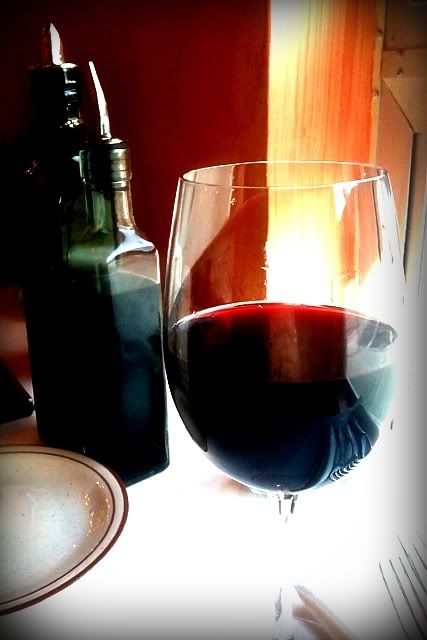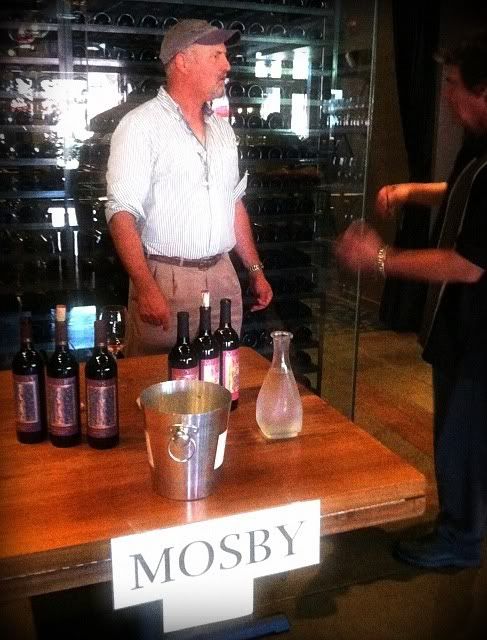The real takeoff point for wine in New York came in 1951, when Ukranian viticulturist Dr. Konstantin Frank started telling anyone who would listen that New York's wine had yet to achieve greatness because they should be growing vinifera grapes, the kind grown in Europe, instead of French and American hybrids. His argument finally found a receptive ear in Frenchman Charles Fournier, the chief at Gold Seal Vineyards. Fournier hired Dr. Frank, Riesling was planted, and the rest is New York State wine history. Dr. Frank has also had success with Chardonnay, Pinot Noir, Gewurztraminer and even Cabernet Sauvignon, but Riesling is his calling card.
Today, Riesling is the big grape for New York's Finger Lakes region. It grows well in the cool climate. You'll also find Seyval Blanc growing in New York vineyards, along with American Hybrids like Catawba, Delaware, Niagara, Elvira, Ives and Isabella grapes. French hybrids like Vidal, Cayuga and Vignoles also get some important acreage.
The Finger Lakes region is the best-known of New York's four AVAs, leading the way for the Hudson Valley, Lake Erie and Long Island AVAs. It's also one of the largest AVAs in the country and one of the leading cool-climate regions, too. The terrain around the three main lakes helps keep the vines safe through cold winters.
The 2010 vintage is the product of the warmest growing season seen in the Finger Lakes region in 40 years. It was wet, too, with the most rain since 1973. Varied wines were produced, but there is a general tendency to lower acidity and big, expressive fruit. Different wineries harvested at different times, resulting in plenty of variation in styles. Most of the Rieslings produced here retail for under $20.
The Finger Lakes Wine Alliance was gracious enough to provide me - and other wine writers - with samples of six Finger Lakes Rieslings from the 2010 vintage. Here they are:
 Anthony Road Wine Company
Anthony Road Wine CompanyDry Riesling Finger Lakes 2010As with all these wines, Anthony Road's is 100% Riesling with a moderate alcohol level of 12.6% abv. The fruit is from their Nutt Road Vineyard, block 3. The grapes are taken from different blocks in each vintage. There’s a “dryness meter” on the label, and the pointer points to “dry."
The nose and palate have a robust minerality, something that seems to be a hallmark of Finger Lakes Riesling, at least as far as I found from these six examples. Fruit aromas here fight to get through, and a scent of melon peeks out from behind the rocks. The palate is also laden with wet rocks and a nice lemon zest flavor appears alongside very good acidity.
 Dr. Frank's Vinifera Wine Cellars
Dr. Frank's Vinifera Wine CellarsDry Riesling 2010Dr. Frank got the Riesling ball rolling in the 1950s and his son Willy carries on the winemaking tradition. Again 100% Riesling, this wine has a 12.2% abv alcohol number.
The wine is quite pale in color and has a stong minerality, but that is abetted by a huge fruit expression. The nose shows what the winery calls "Keuka Lake minerality" and an intense pear and pineapple juice profile. The palate is dominated by that slate minerality. Some citrus component accompanies it, with orange or tangerine on the finish. It's quite refreshing with an acidity which, while adequate, does not make itself the focal point.
 Fox Run Vineyards
Fox Run VineyardsDry Riesling 2010Fox Run's grapes are grown in the glacial Seneca Lake soil with broken slate and sandy loam. Another 100% Riesling, winemaker Peter Bell utilizes fruit from Fox Run Vineyard Block 1. The alcohol level is a low 11.5% abv.
It's a lovely, pale, golden color in the glass and shows those slate minerals on the nose, along with citrus and an ever-so-slight hint of honey. The taste is full of Meyer lemon and big minerals, and there is an extremely nice acidity.
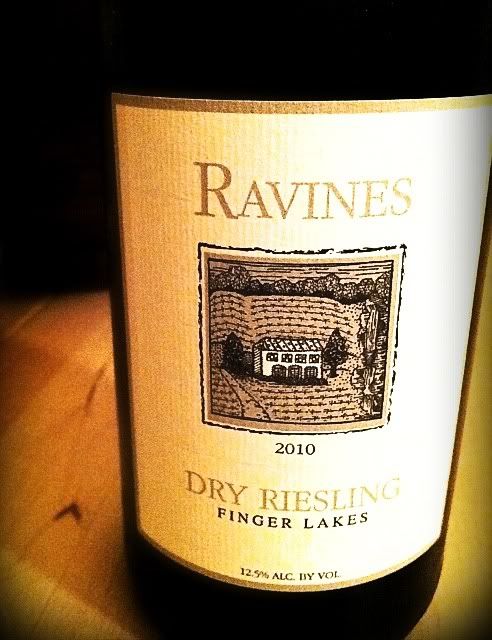 Ravines Wine Cellars
Ravines Wine CellarsDry Riesling 2010
The Riesling for Ravines dry effort is taken from three different vineyards: 16 Falls (70%), Argetsinger (25%) and Hobbit Hollow (5%). 16 Falls and Hobbit Hollow feature shale limestone soil, while Argetsinger is gravel on limestone bedrock.
These grapes from the east side of Keuka Lake are whole cluster pressed, and the finished product shows an alcohol level of 12.5% abv.
The Ravines Riesling pours up pale golden in the glass. It's not a surprise by now, but minerals abound on the nose. Fruit does make a good play here, though, mainly lime and honeydew. On the nose, lime notes and a minerality even stronger than on the nose make an appearance. Citrus zest on the finish mates with a very good acidity.
 Red Newt Cellars
Red Newt Cellars"Circle" Riesling 2010
Red Newt’s “Circle” Riesling has the pointer on the label’s “sweetness scale” pointing to medium-sweet. Winemaker David Whiting uses grapes from the southeastern shore of Seneca Lake to produce a Riesling which carries an 11.5% abv number and has a residual sweetness of 3.4%, several points higher than the previous offerings we’ve tasted. The '09 vintage was a double gold medal winner, and the ‘10 vintage is the result of a warmer than usual growing season. The winery says you can expect extra notes of baked fruit.
The pale wine has a beautiful nose of honeysuckle and oranges, with the minerality not as prominent as in the four tasted so far. Peaches and a light citrus spray decorate the palate, with the finish delivering a lengthy show of grapefruit. Not really a full-blown sweet wine, I’d call it off-dry. The acidity is nearly bracing, too, so it’s a food-friendly quaff.
 Wagner Vineyards
Wagner VineyardsRiesling Semi Dry 2010
The Wagner family has four generations of winemaking behind them on the eastern slopes of Seneca Lake in Lodi, New York. I’m a big fan of wines from Lodi, California, so my hopes are high that more than the name will be similar.
The sweetness meter on the back label has the pointer right in the middle. The grapes come from the Wagner’s estate vineyard. Three lots of fruit are independently vinified, then blended together.
A little yellower than Red Newt, but still fairly pale, this Riesling smells of apricots in a big way. There’s a slight minerality on the nose, but fruit is the big thing. The palate shows a nice lemon/lime/orange display of citrus and a hint of tropical fruit on the finish. The acidity is right on the money.
Find out more about the Finger Lakes wine region atFingerLakesWineCountry.com and FingerLakesWineAlliance.com.
Follow Randy Fuller on Twitter
Follow Finger Lakes Wine on Twitter

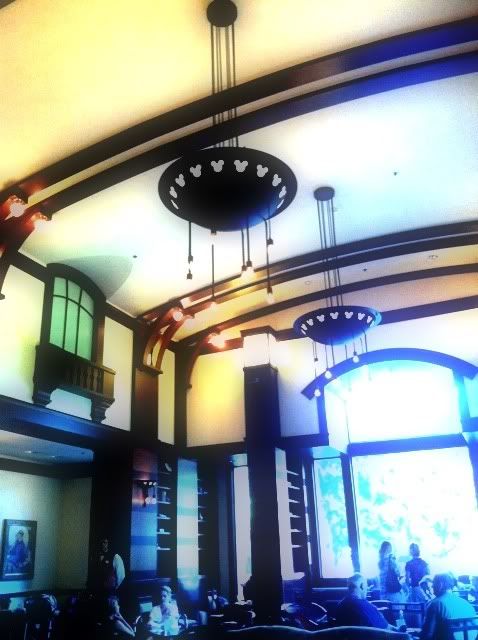
 Their wine list isn't incredibly exciting, but it is California-focused, fitting for a hotel that pays homage to the architecture and decor of the Arts and Crafts movement typified at Yosemite National Park’s
Their wine list isn't incredibly exciting, but it is California-focused, fitting for a hotel that pays homage to the architecture and decor of the Arts and Crafts movement typified at Yosemite National Park’s 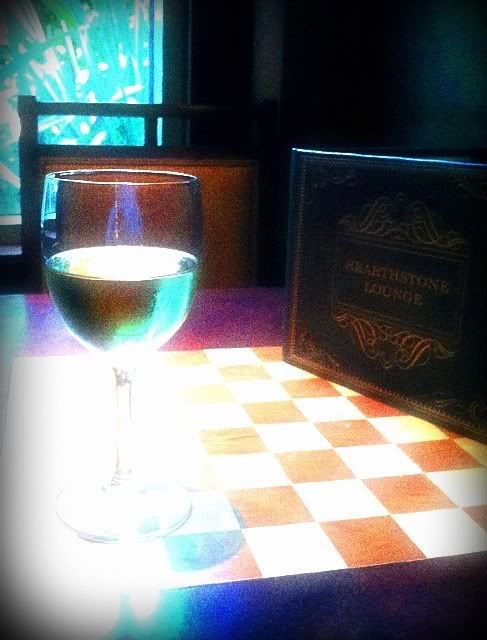 On another visit I tried the
On another visit I tried the 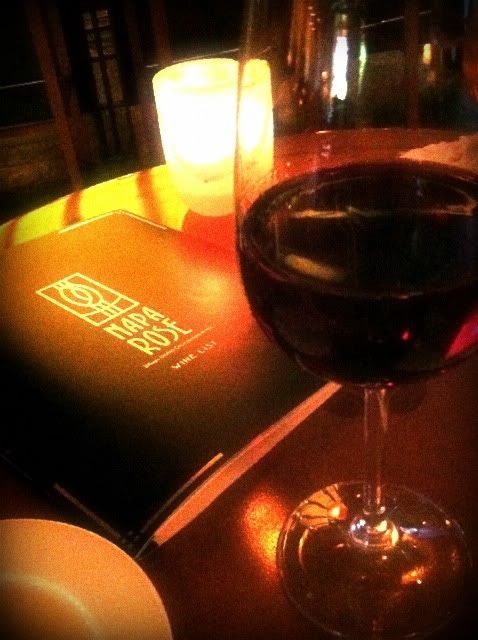 Napa Rose
Napa Rose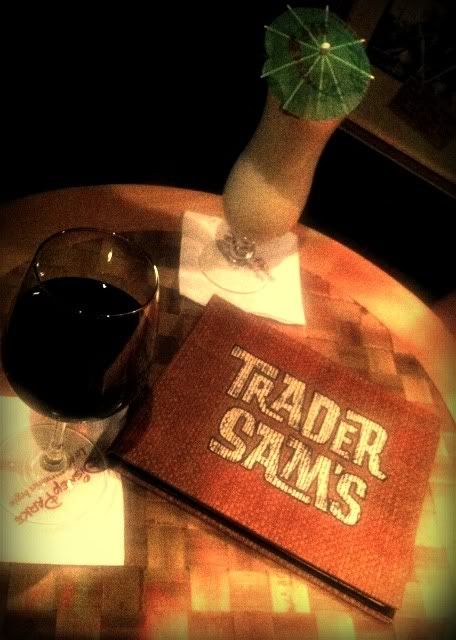 A new addition to my Disneyland wine map is
A new addition to my Disneyland wine map is 



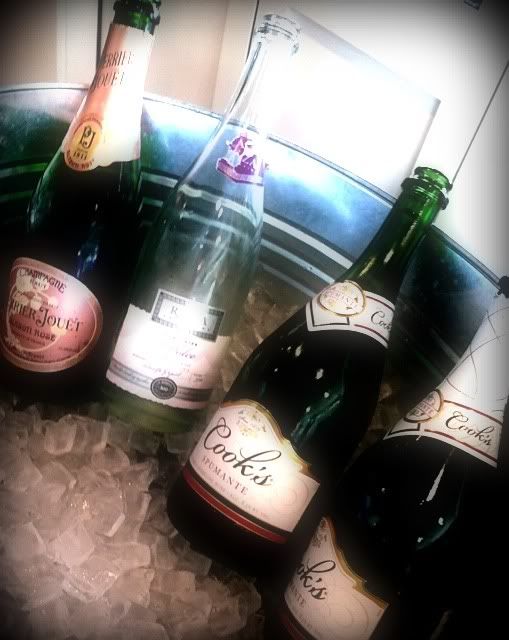
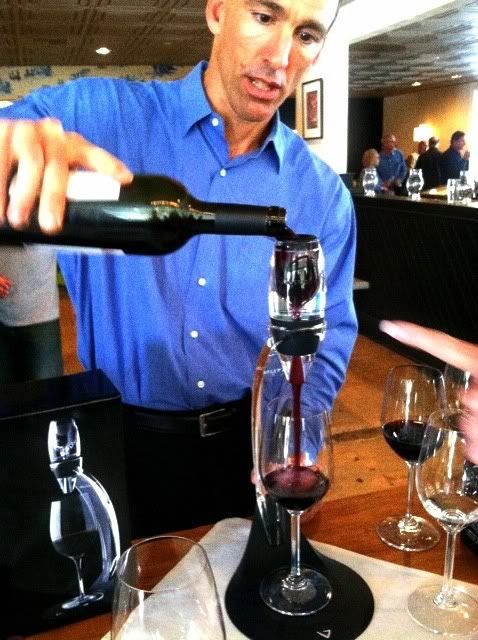 Vinturi was at the event, showing their line of wine aerators. Since I had not tried the Vinturi yet, I lined up for the side-by-side comparison. I must admit that although I had heard and read that the units worked quite well, I was still skeptical.
Vinturi was at the event, showing their line of wine aerators. Since I had not tried the Vinturi yet, I lined up for the side-by-side comparison. I must admit that although I had heard and read that the units worked quite well, I was still skeptical.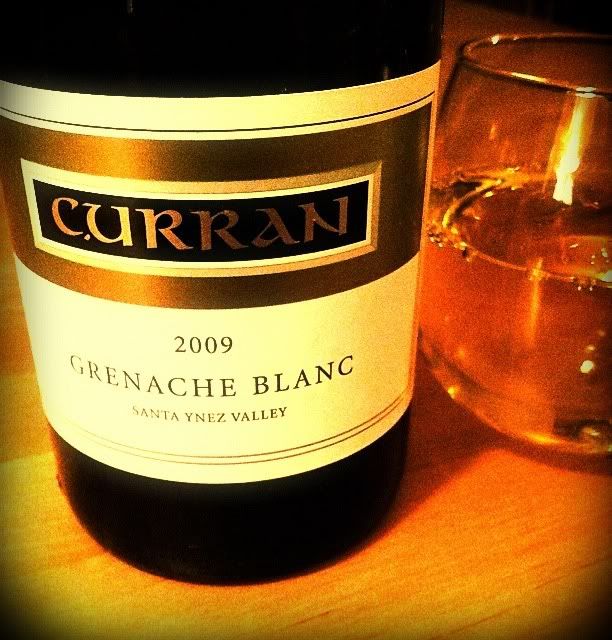


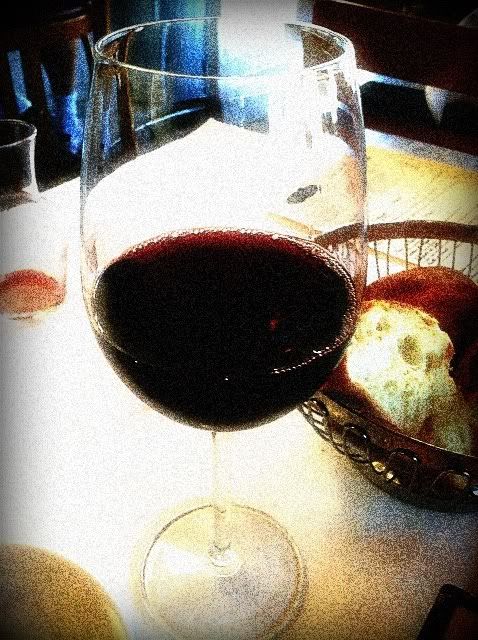

 The mead he calls Wild is honey and blueberry wine made from unprocessed New Hampshire wildflower honey and mountain grown blueberries. It carries an alcohol level of 14.2% abv.
The mead he calls Wild is honey and blueberry wine made from unprocessed New Hampshire wildflower honey and mountain grown blueberries. It carries an alcohol level of 14.2% abv. Utopian is the strongest of the quartet I tried at 16.9% abv. It’s a semi-sweet, limited edition mead which is fermented and aged in Samuel Adams Utopias barrels.
Utopian is the strongest of the quartet I tried at 16.9% abv. It’s a semi-sweet, limited edition mead which is fermented and aged in Samuel Adams Utopias barrels. Desire is a beautiful deep ruby color. The nose again has a firm underpinning of honey aroma with a pretty straightforward display of the fruit used in making this melomel - black currant, black cherry and blueberry. The palate is dominated by the currant to the degree that it bears a striking similarity to cassis. It's not as viscous as Wild, but it definitely sits very full in the mouth. The 16.7% alcohol content means it's a fairly stiff drink, at least in the realm of wine. There's good acidity here, but I don't think I could bring myself to eat while savoring the texture and flavor of Desire. Well, maybe some chocolate. Desire beat out 352 other wines in a New England competition.
Desire is a beautiful deep ruby color. The nose again has a firm underpinning of honey aroma with a pretty straightforward display of the fruit used in making this melomel - black currant, black cherry and blueberry. The palate is dominated by the currant to the degree that it bears a striking similarity to cassis. It's not as viscous as Wild, but it definitely sits very full in the mouth. The 16.7% alcohol content means it's a fairly stiff drink, at least in the realm of wine. There's good acidity here, but I don't think I could bring myself to eat while savoring the texture and flavor of Desire. Well, maybe some chocolate. Desire beat out 352 other wines in a New England competition.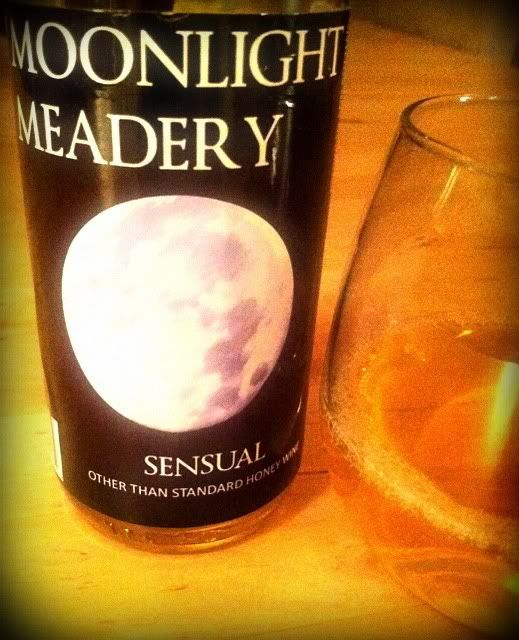 The golden mead called Sensual shows a whole honeycomb full of honey aroma. That’s no surprise, since it is a traditional mead, made only from wildflower honey, water and yeast. The palate is dripping with honey, too. Once again, a resounding acidity is present and the finish is very long and ridiculously satisfying. The taste of pure honey is all that remains after a drink, and it’s there for quite a while. The alcohol level for Sensual is 15.3% abv. It's the simplest of the four featured here, but it may be my favorite.
The golden mead called Sensual shows a whole honeycomb full of honey aroma. That’s no surprise, since it is a traditional mead, made only from wildflower honey, water and yeast. The palate is dripping with honey, too. Once again, a resounding acidity is present and the finish is very long and ridiculously satisfying. The taste of pure honey is all that remains after a drink, and it’s there for quite a while. The alcohol level for Sensual is 15.3% abv. It's the simplest of the four featured here, but it may be my favorite.


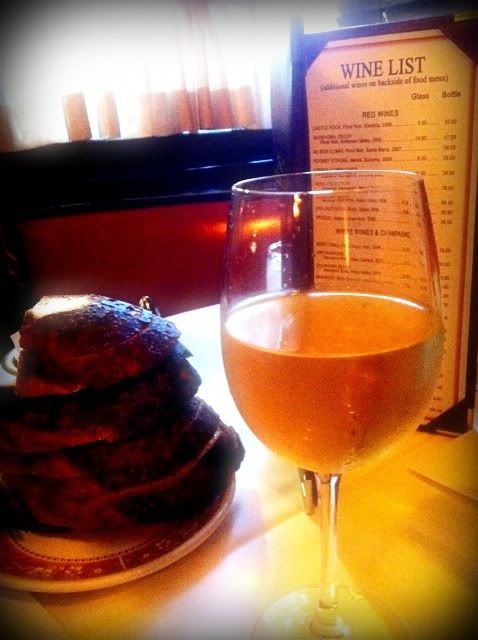 After a bit of conversation about the
After a bit of conversation about the 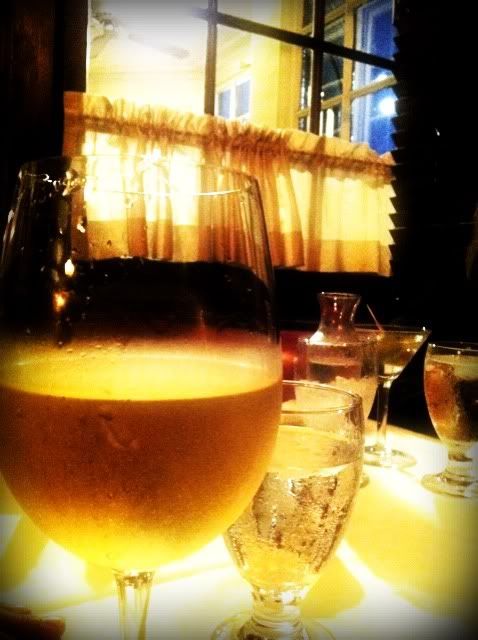 New Zealand's
New Zealand's 